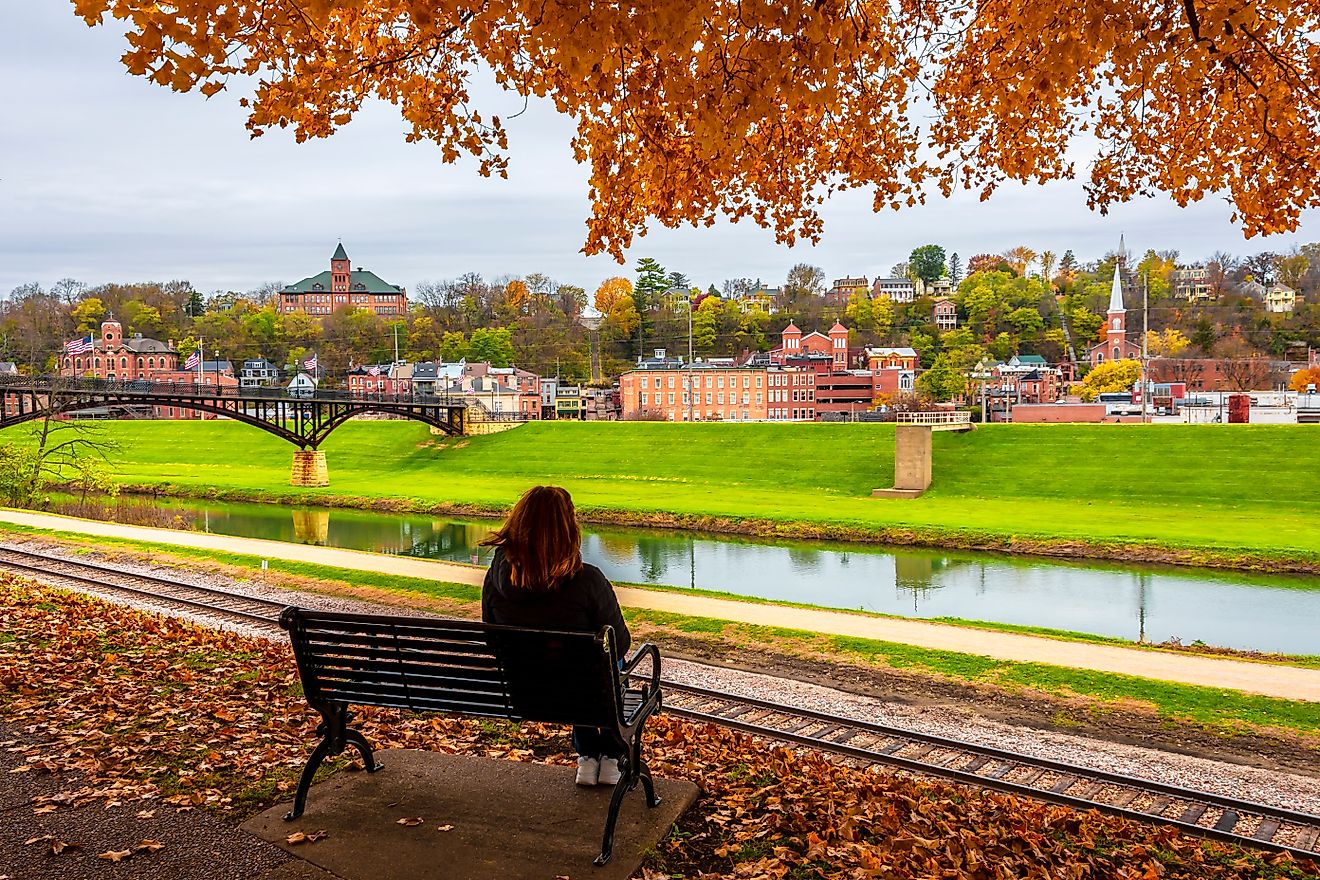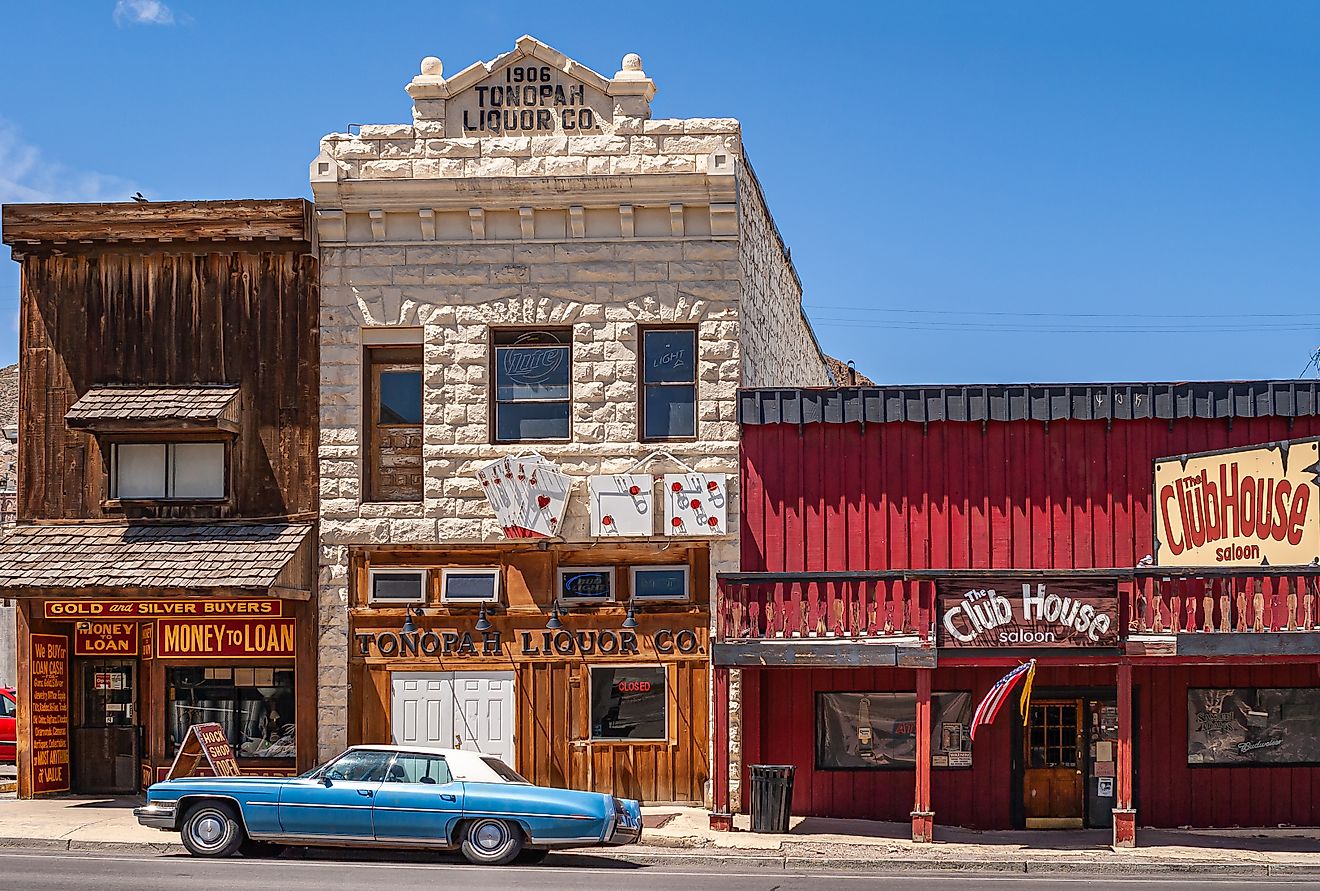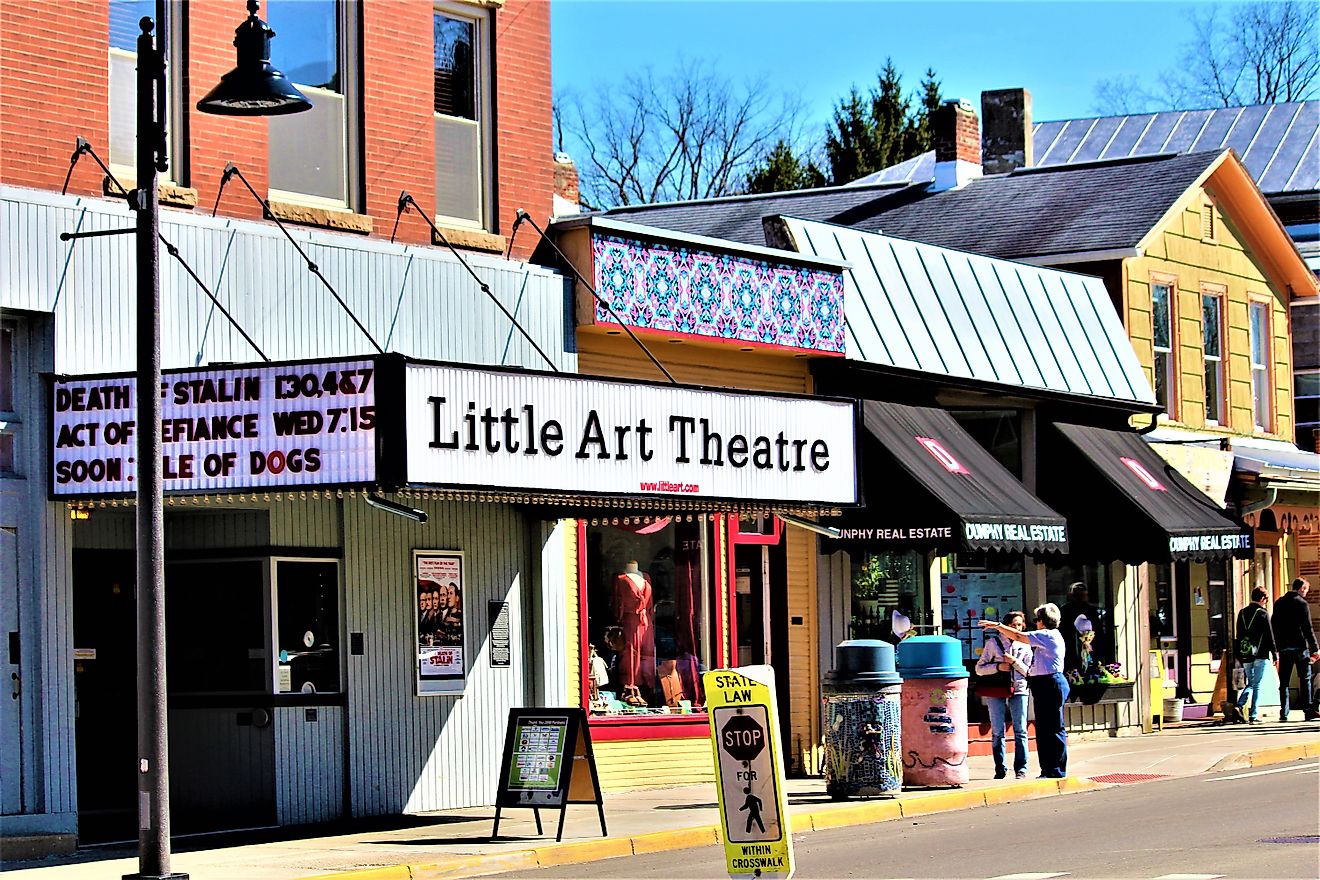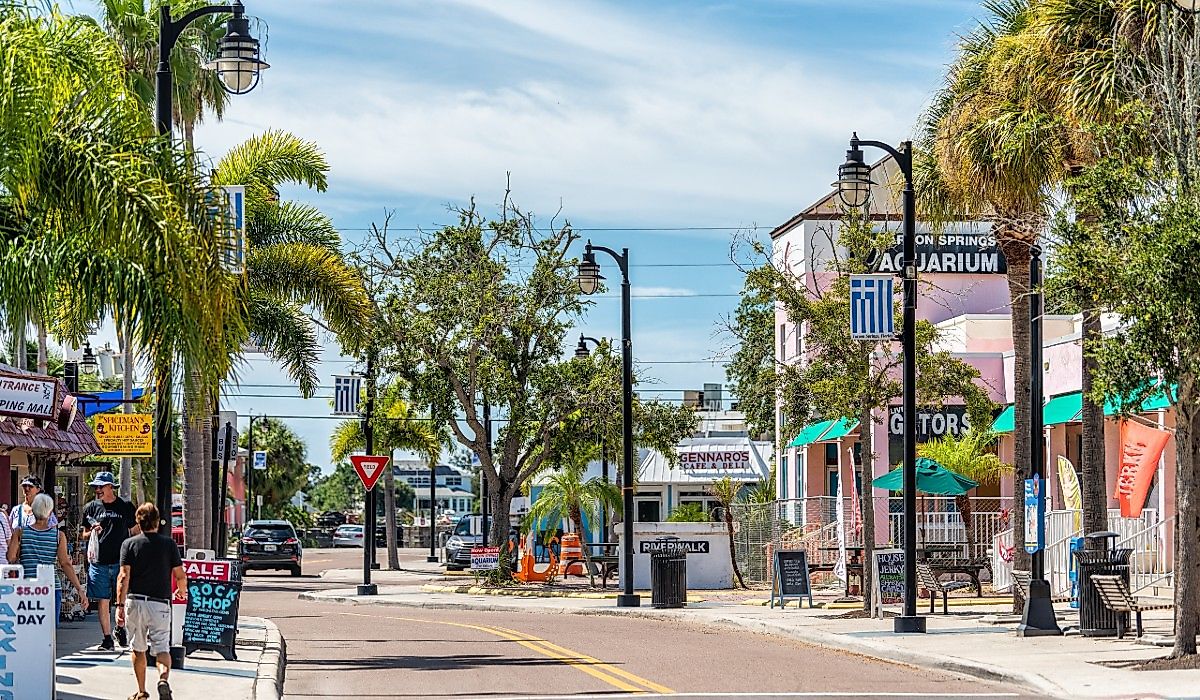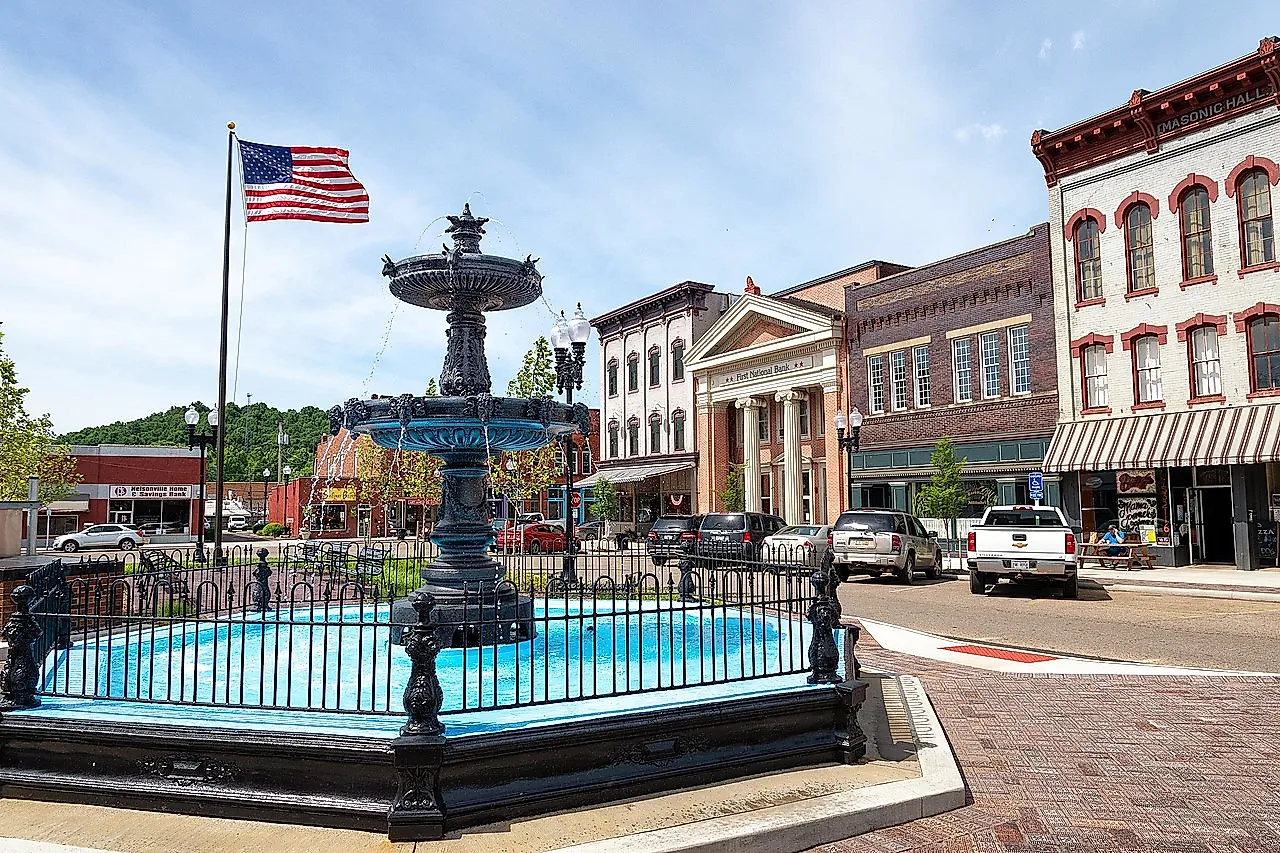
8 Most Charming Town Squares In Ohio
Ohio is a state that still puts a pin in the map and builds outward. The surveyor’s grid of the old Northwest Territory, the New England habit of a commons, and a century of courthouse pride combine here into a living civic geometry: circles and greens framed by brick cornices, bell towers, and bandstands. On a summer evening, the soundtrack is courthouse chimes, a farmer’s market tent zipper, and the squeak of a bench as someone leans in to talk. The proof is underfoot, star bricks, worn curb stones, maple-sugar stains on a lawn where the steam pans once sat.
For this guide, each square cleared a simple “square test”: a historic center of gravity, a locally owned anchor or two, a true public stage, and a walkable rim where everything important sits within a few hundred steps. The eight that rose to the top include a perfect rotary planned in 1807, a plaza paved with patterned brick from the town’s own kilns, a maple capital whose courthouse lawn runs on pancakes every April, and a river city grid that never turned its back on the water. Together they show how Ohio still gathers, at the center, under open sky, face to face.
Chardon
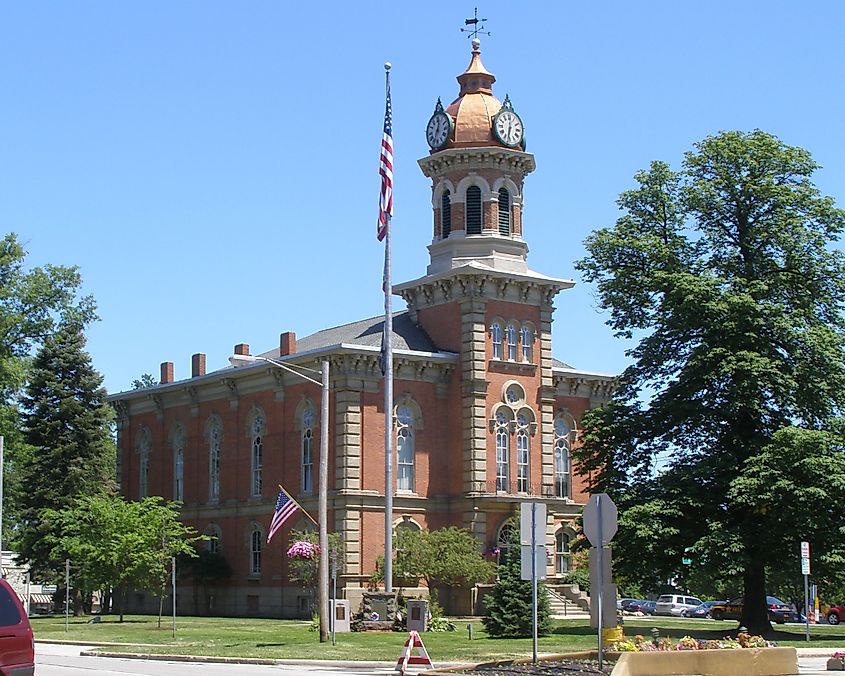
Chardon’s town square is the highest in elevation of any county seat in Ohio, but it’s not just altitude that sets it apart. At the heart of the square is the Geauga County Courthouse, rebuilt in 1869 after a fire, surrounded by Civil War-era buildings that have remained intact for more than 150 years. The town, with just over 5,000 residents, is synonymous with maple syrup, hosting the longest-running maple festival in the U.S., dating back to 1926. The square remains the gathering point for nearly every major event in town, from candlelight walks in December to pancake breakfasts in April.
Four corners of activity surround the green. The Chardon Tavern & Grill, tucked into a brick corner building, offers bourbon meatloaf and live music. Two doors down, Square Bistro serves upscale plates like duck confit flatbread and truffle fries in a modern interior that contrasts the 19th-century façade. Morgan Foundation’s Heritage House, a small, white-columned building within the square, functions as a community hub and exhibition space. A short walk north leads to Chardon Lakes Golf Course, an understated but scenic public course lined with sugar maples. Every business, alleyway, and bench around the square reflects the scale and rhythm of a town built around its centerpiece.
Tallmadge
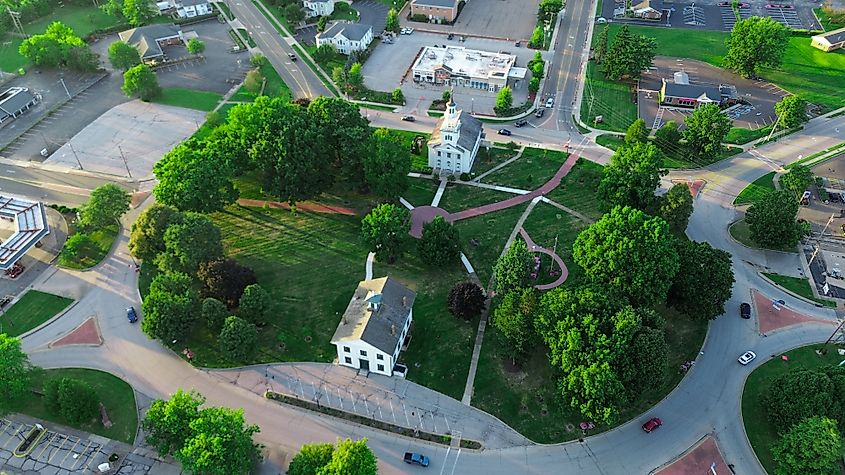
Tallmadge is the only town in Ohio, and one of the few in the Midwest, designed entirely around a perfect traffic circle. Platted in 1807 by Reverend David Bacon, the circular town center was inspired by New England ideals of symmetry and civic order. At its core stands the 1825 Tallmadge Church, a white, steepled structure that appears on city signage and documents. Eight roads radiate outward like spokes from the central green, each lined with 19th-century homes, historic markers, and stone walls. The circle remains a functioning rotary, giving the town square both motion and permanence.
Inside the square, the Old Town Hall and Museum, operated by the Tallmadge Historical Society, houses local artifacts including Civil War-era clothing and original township maps. For food, Sammie’s Bar and Grill serves fried pickle chips and loaded potato skins in a converted garage just off the circle. A half mile east, the Freedom Trail passes through Tallmadge at Middlebury Road, offering six miles of paved walking and biking path lined with wildflowers and interpretive signage. Each element of Tallmadge’s layout continues to express its founders’ original design: civic function structured by quiet geometry.
Nelsonville
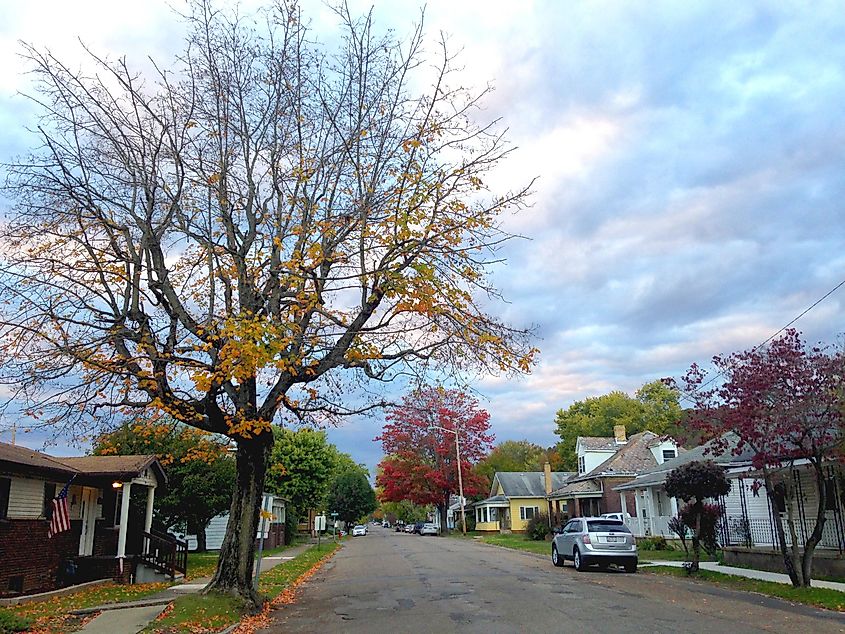
Nelsonville is one of the few towns in the U.S. where the streets are paved with star bricks, hexagonal clay pavers embedded with a raised star, manufactured locally at the height of the town’s brickmaking industry in the early 1900s. The bricks frame the Public Square, which remains the focal point of downtown, bordered by preserved Italianate buildings. Nelsonville was once a vital stop along the Hocking Valley Railway; remnants of this industrial past now serve as platforms for tourism, art, and music.
Stuart’s Opera House dominates the southeast corner of the square and continues to host national touring acts, film screenings, and live theater. Across the street, FullBrooks Café roasts its own beans and serves lemon-ricotta pancakes in a narrow space with exposed brick and rotating art exhibits. The Hocking Valley Scenic Railway boards just a block south of the square and offers weekend excursions through the forested hills of southeastern Ohio. Robbins Crossing, a recreated 1850s Appalachian village on the edge of Hocking College, provides living-history demonstrations and costumed interpreters in log cabins. Nelsonville’s square remains intact not through preservation alone, but through sustained use, each brick and beam woven into daily life.
Granville

Granville was laid out in 1805 by settlers from Massachusetts and Connecticut who imported their street grid, architectural style, and civic structure almost unchanged. The town’s main thoroughfare, East Broadway, serves as the de facto town square. Denison University rises at the west end of the street, and a steep slope at the east end gives way to wooded ravines and burial mounds built by the Hopewell culture over 2,000 years ago. The entire downtown runs along a single axis, with white-steepled churches and columned inns facing each other across wide brick sidewalks.
The Buxton Inn, continuously operating since 1812, offers a bar in the original stone cellar and guest rooms rumored to be haunted. Across the street, Village Coffee Company serves cappuccinos and toasted bagels beneath oil portraits of local figures and visiting authors. A short walk up College Hill leads to the Denison Museum, where exhibits rotate between African textiles, contemporary printmaking, and student-curated collections. Further east, the Granville Farmers Market runs every Saturday morning from May through October, with produce from Morning Dew Orchard and baked goods from Lucky Cat Bakery. Granville’s layout, institutions, and traditions remain rooted in the New England model, transplanted whole into the Ohio landscape.
Yellow Springs
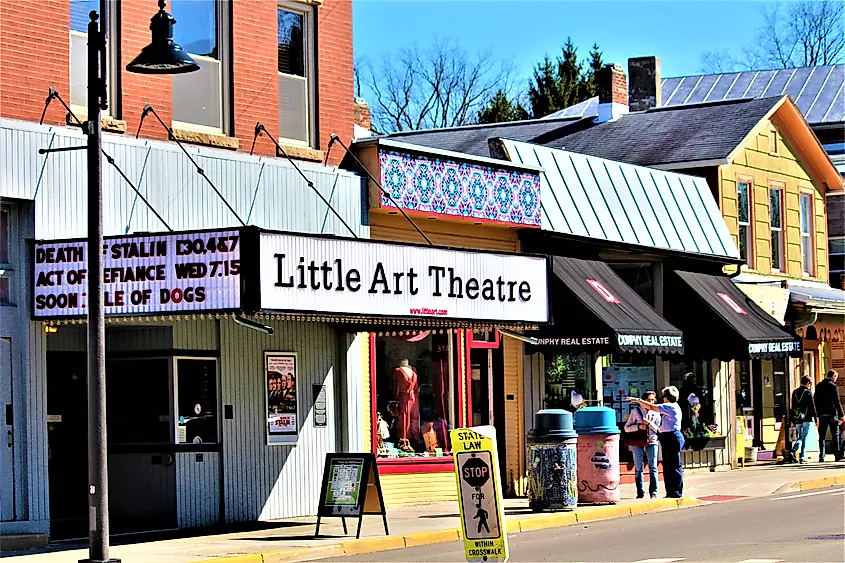
Yellow Springs was founded in 1825 as a utopian settlement and later became home to Antioch College, one of the first in the U.S. to admit women and Black students on an equal basis. Its town center, where Xenia Avenue and Dayton Street meet, functions as a civic commons, framed by storefronts painted in blues, oranges, and greens. Yellow Springs has fewer than 4,000 residents but more than 60 independent businesses, most of which operate within a two-block radius. There are no national chains downtown, by local ordinance and custom.
Emporium Wines & Underdog Café serves egg and avocado wraps next to racks of wine and a permanent corner stage for live folk shows. A few steps away, Yellow Springs Toy Company stocks handmade wooden puzzles, science kits, and Czech marionettes. Dino’s Cappuccinos, tucked beside Dark Star Books, runs a cash-only counter and a rotating lineup of local scones and muffins. South of downtown, Glen Helen Nature Preserve spans over 1,000 acres and includes the namesake spring that still trickles out of yellow-tinged rock. The town square’s scale is walkable, but dense with activity; its configuration remains more informal than most, built less around traffic flow than conversation, music, and footpaths.
Troy
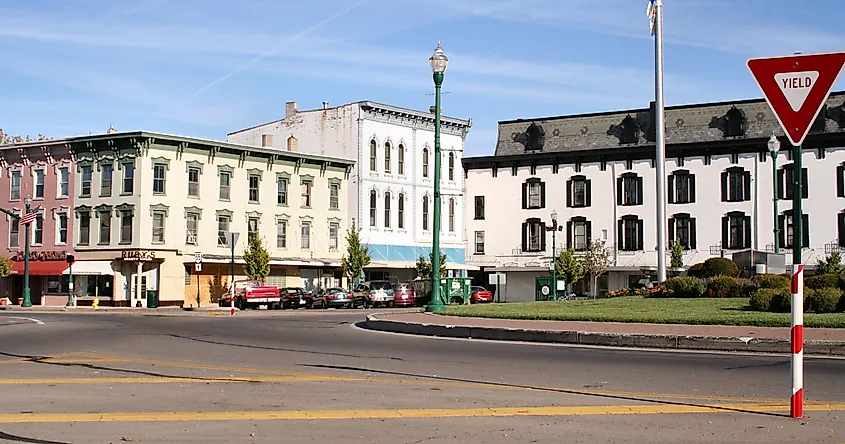
Troy’s public square was laid out in 1807, just two years after Miami County was founded. Its courthouse, rebuilt in 1888 after a fire, anchors the southwest corner and remains one of Ohio’s few examples of Richardsonian Romanesque architecture still in public use. The square’s perimeter is a near-perfect rectangle of 19th-century buildings, most with original cornices, ironwork, and pressed tin ceilings. Troy’s downtown was added to the National Register of Historic Places in 1976 and has functioned as the city’s commercial center ever since.
Bakehouse Bread & Cookie Company serves asiago peppercorn loaves and lemon bars from a brick storefront facing the courthouse lawn. Around the corner, Leaf & Vine operates as both a cigar shop and bourbon bar, with a back patio that overlooks Market Street. The Troy-Hayner Cultural Center, located two blocks west in a former mansion, displays rotating regional art exhibits and houses a music library open to the public. North of the square, Treasure Island Park sits along the Great Miami River and hosts summer concerts on a barge-turned-stage. Troy’s square remains defined by its original layout—open, gridded, and commercial—but continues to evolve as a cultural and recreational anchor in Miami County.
Geneva-on-the-Lake
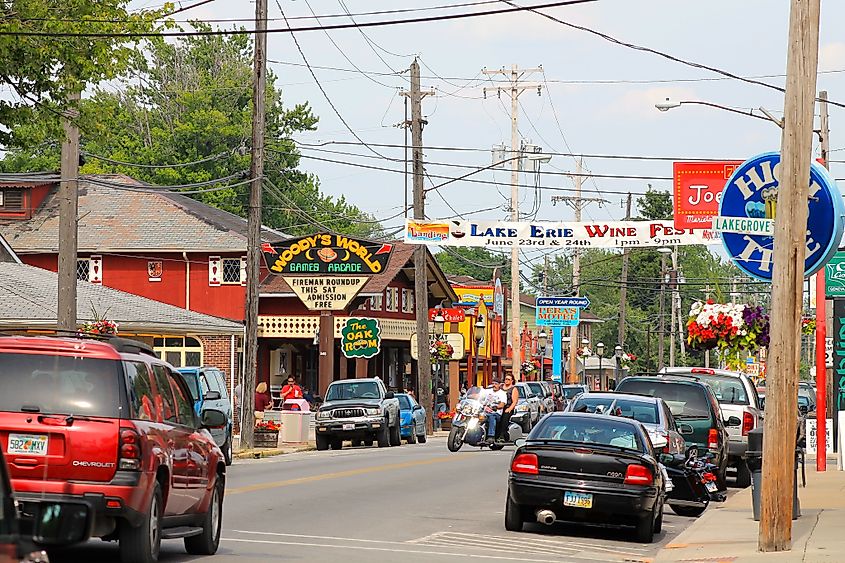
Geneva-on-the-Lake was established in 1869 as Ohio’s first summer resort town, and its main street—The Strip—still follows the same one-mile route along Lake Erie’s shoreline. Instead of a traditional town square, the village organizes itself around a boardwalk-style commercial strip filled with seasonal shops, arcades, and food stands. Parallel to the street, Lake Erie defines the northern boundary, with no buildings between the shoreline and the sidewalk. That proximity, combined with the town’s refusal to franchise, keeps Geneva-on-the-Lake grounded in mid-20th century roadside culture.
Eddie’s Grill has served footlong hot dogs and root beer floats since 1950, with indoor booths lined by jukeboxes and Elvis portraits. Across the street, Sportsterz Bar and Grill hosts bike nights, live bands, and lakefront patio seating. Allison’s Mini-Golf, built in 1924, is the oldest continuously operating miniature golf course in the country and still uses the original hand-painted signs and concrete obstacles. Geneva State Park lies just west of The Strip and includes a public beach, marina, and a paved trail that leads into the adjacent Geneva Marsh Wildlife Area. Geneva-on-the-Lake remains defined by its original purpose: a narrow, walkable stretch where Lake Erie is always visible, and where seasonal activity has never moved inland.
Marietta

Marietta was the first permanent settlement in the Northwest Territory, established in 1788 at the confluence of the Muskingum and Ohio Rivers. The city’s original grid remains intact, laid out by Revolutionary War veterans who named streets after classical figures—Putnam, Washington, and Wooster. Though not built around a formal square, Marietta’s downtown forms a compact district of red brick buildings, stone storefronts, and narrow alleys that center on the corner of Front and Greene Streets. Brick-lined sidewalks and gas-style lamps run along the riverfront, where sternwheelers still dock.
The Lafayette Hotel, overlooking the Ohio River, has operated since 1918 and houses the Gun Room Restaurant, which displays Civil War rifles and steamboat memorabilia. Just west of the hotel, The Busy Bee Restaurant serves buttermilk pancakes and chipped beef from a counter beneath framed photos of 20th-century Marietta. The Campus Martius Museum sits on the old stockade site and holds exhibits on pioneer migration and the original Ohio Company land grants. Mound Cemetery, a few blocks east, contains one of the largest collections of Revolutionary War officer graves in the country and surrounds an intact Adena burial mound. Marietta’s walkable core has not shifted outward; its historical footprint continues to define the modern layout.
Ohio’s most charming town squares are more than preserved blocks of architecture, they are living blueprints of how the state gathers, trades, and celebrates. From maple festivals on high ground to star-brick streets shaped by local kilns, each square holds a distinct rhythm rooted in place. Together, they prove that in Ohio, the true heart of a community still beats at its center, where history, commerce, and conversation converge in open air.






